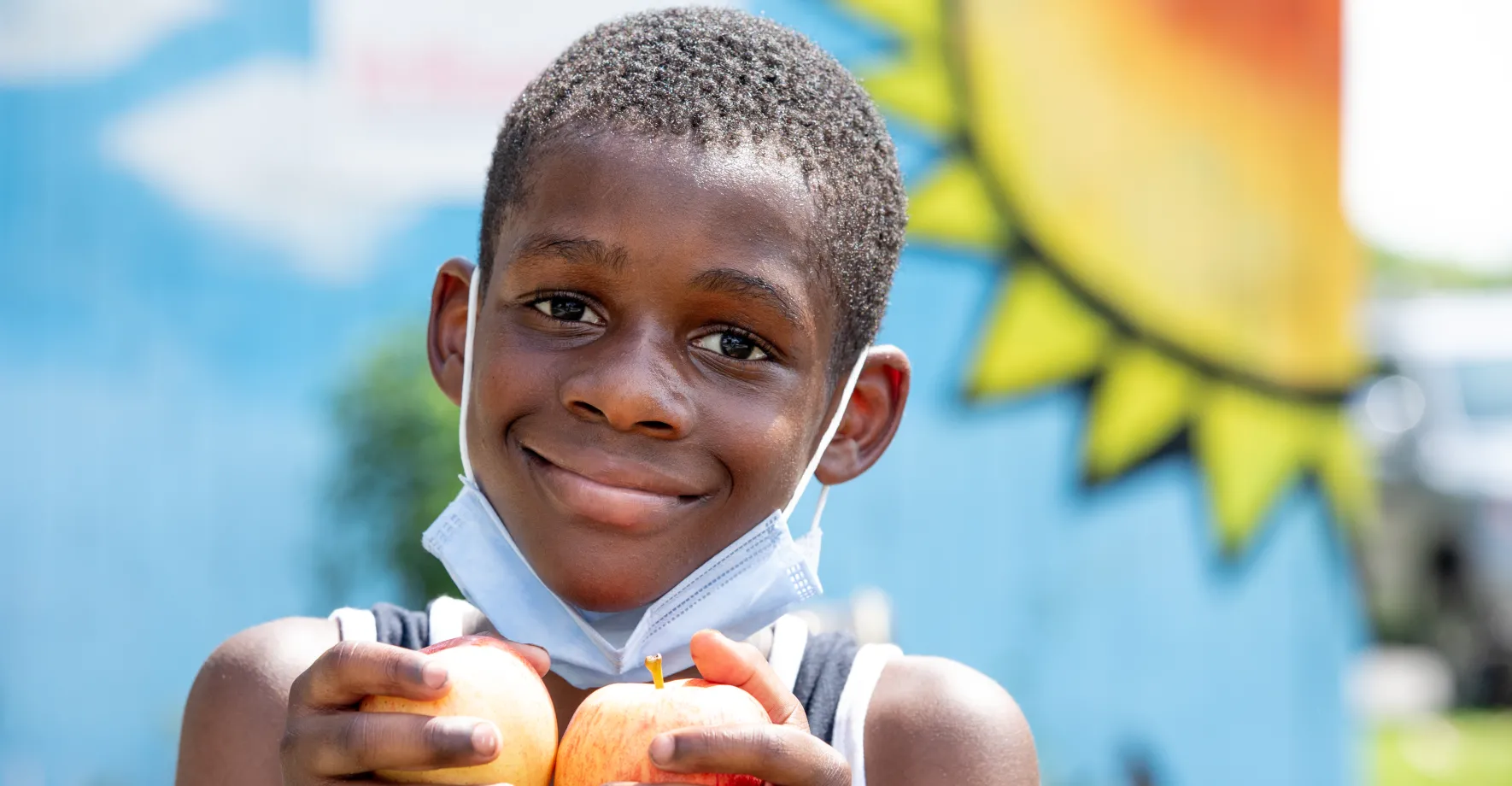
Children in the United States today are facing a hunger crisis. The COVID-19 pandemic led to millions of families facing financial hardship struggling to put food on the table. Our nation had to find a way to reach a lot of children quickly with the food they needed.
Through hard work, innovative approaches and policy flexibilities, heroes around the nation were able to reach kids with the nutrition they needed. School and community meals work alongside programs like Pandemic EBT, SNAP and summer meal programs to make sure children are able to get the food they need, when they need it. Here’s a look at the past year and the path ahead.
Targeted Investments
No Kid Hungry has been working with schools and organizations around the nation. Since March 2020, No Kid Hungry has provided more than $75 million in grants to more than 2,000 organizations including schools, local nonprofits and food banks across all 50 states, DC, Guam and Puerto Rico. Together, No Kid Hungry grantees have reported serving nearly a billion meals to children and families across the country.
Stronger, More Effective Policies
- In December, Congress strengthened the Supplemental Nutrition Assistance Program (SNAP), the grocery benefit that helps families buy the food they need, by increasing benefits by 15%, or about $25 per person each month, keeping in mind that the benefit averages to about 1.40 per person per meal. The American Rescue Plan, passed by Congress in March 2021, extended this increase through September 30, 2021.
- In April 2021, the USDA extended child nutrition waivers through the 2021-2022 school year, allowing schools to plan and budget for next year’s meal programs so they can operate effectively, efficiently and with the stability needed to support the reopening of school buildings for kids to return to classrooms.
- The following week, the USDA also extended Pandemic EBT through the summer - a program that provides approximately $34 a week to help parents cover the costs of the free or reduced price-meals their kids would normally receive in school, to help kids through the hungriest time of the year: summer.
- In June, the USDA withdrew a Trump era proposal that would have stripped SNAP benefits from over 3 million people and caused 1 million children to lose access to free school meals. The proposed rule sought to get rid of a policy known as Broad-Based Categorical Eligibility (BBCE), which helps families enroll in SNAP if they’re already eligible for other anti-poverty programs. The withdraw of this rule is a big win for families and kids. Aligning eligibility for these programs is beneficial for three reasons: 1) it’s efficient and reduces red tape, 2) it helps the working poor gradually decrease their SNAP benefits as their income begins to increase rather than face an abrupt cut-off and 3) it helps certify more kids whose families participate in SNAP in the free school lunch program.
But our work is far from over. Today we have a window of opportunity to improve and update child nutrition programs so they are more effective, efficient and better able to feed kids in need.
The Road Ahead
As hunger and the need for support skyrocketed in 2020, heroes around the nation stepped up and worked tirelessly to make sure kids were fed. Now it's time to double down on our efforts, step on the gas and get important federal policies over the finish line.
- Through the Child Nutrition Reauthorization process in Congress, we will focus on modernizing the way summer meals are served, creating a more efficient program that reaches more children and building on what has worked during the pandemic. We're also working to remove the administrative barriers and red tape so we can focus on ensuring that kids get the nutrition they need.
- We'll advance policies outlined in the new White House "American Families Plan," a proposal aimed at reducing child poverty by expanding access to education, nutrition, affordable child care and other policies.
- We’ll support the President’s FY 2022 budget proposal that helps lay the funding structure for the administration’s American Families Plan and includes funding for SNAP, WIC and child nutrition programs, supports pandemic emergency measures to combat the hunger crisis and seeks to increase access to school meal programs in some of our nation’s highest-need schools and districts.


